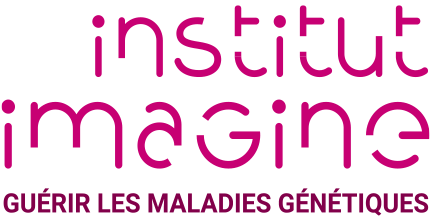Published on 30.07.2025
Developmental language disorders (DLD) concern children with persistent language difficulties that significantly affect social interaction or progress at school, having a significant and lasting impact on their quality of life into adulthood. By definition, DLD is not associated with an identified biomedical cause (such as a brain injury or neurodegenerative disease), deafness, autism spectrum disorder (ASD) or intellectual disability (ID). However, DLD is sometimes associated with other co-morbidities such as attention deficit hyperactivity disorder (ADHD), developmental dyslexia or coordination problems.
Language disorders are found in 7 to 8% of the population, and 2% if we consider the severe and long-lasting forms that interest us in this study.
While language disorders may have a multifactorial origin, involving socio-cultural and educational factors, there is much evidence to suggest a genetic origin. Identical’ twins have higher concordance rates for these disorders than “fraternal” dizygotic twins, and familial cases of language acquisition difficulties, present in several generations within the same family, are also frequently observed. However, the clinical heterogeneity of NLD, the frequent presence of other disorders and the different terminologies used for many years have hampered diagnosis and research into this condition, and prevented it from being properly managed.
Clothilde Ormières took an interest in a particular cohort of DLD patients, first as part of her medical thesis project, then as part of a wider research project, under the supervision of Vincent Cantagrel and Valérie Malan, from the Genetics of Neurodevelopmental Disorders laboratory at Institut Imagine. This homogeneous cohort is made up of patients with DLD, with no improvement after rehabilitation, and with no ASD, ID or other associated pathology. His approach, based on genomic studies of the patients thus identified, aimed to better define the molecular basis of this disorder.
The strict diagnostic criteria applied by the multidisciplinary team, including speech therapists, neuropsychologists and paediatric neurologists, have enabled a cohort of 27 patients to be established, in collaboration with the Necker-Enfants malades AP-HP hospital and the Garches and Geneva reference centres.
Follow-up of this group of patients has led to the identification of several genetic variations that are probably the cause of DLD : for example, a pathogenic sequence variant in the ZNF292 gene, a gene already known to be involved in cases of ID and ASD, or variations in the number of copies of genes, such as microdeletion of part of chromosome 15, or duplication of part of chromosome 16.
The researchers also highlight the variable expressivity of symptoms for the same mutation, which is probably explained by additional factors, such as epigenetics and environmental factors.
The results suggest that sporadic cases of DLD are often linked to ‘de novo’ mutations, not transmitted by the parents. In contrast, the majority of familial cases currently remain unresolved and appear to involve susceptibility factors. DLD is a complex disorder, and these observations demonstrate the involvement of genetic factors shared with those involved in ASD and ID. It was therefore critical to have a cohort with rigorous clinical evaluation in order to draw this conclusion and to define the existence of common genetic factors for these disorders, which are nonetheless different (!).
The language disorders reference centre at the Raymond Poincaré Hospital, with Dr Emilie Schlumberger's team, played an important role thanks to its expertise, and within the research laboratory, Dr Marion Lesieur-Sebellin and Karine Siquier-Pernet carried out a large part of the genetic analyses.
This work, which was made possible thanks to the support of Eric Perrier, Managing Director of VISEO, and the « Amis Entrepreneurs d'Imagine », is nevertheless a first, both in terms of establishing a precise and detailed definition of DLD, and in terms of demonstrating a proven link between the genetic origin of language disorders and that of ASD and ID. This better understanding of the molecular causes of DLD means that more appropriate treatment can be envisaged for patients whose disorders cannot yet be improved by existing rehabilitation. This work also opens the door to further genetic studies for a group of patients that has been little or not studied until now.
Reference :
Deciphering the genetic basis of developmental language disorder in children without intellectual disability, autism or apraxia of speech
C Ormieres et al., Molecular Autism, 2025
doi: 10.1186/s13229-025-00642-8
Corresponding author :
About « Amis Entrepreneurs d'Imagine » :
Initiated by Eric Perrier, CEO of VISEO, the « Amis Entrepreneurs d'Imagine » network was created to support an ambitious research programme dedicated to neurodevelopmental and learning disorders, with the aim of discovering their genetic origins. Today, this group of committed and loyal entrepreneurs, including Nicolas Doucerain, Founder and Chairman of VALUMEN, continues to grow stronger and to provide essential support for this cause.
